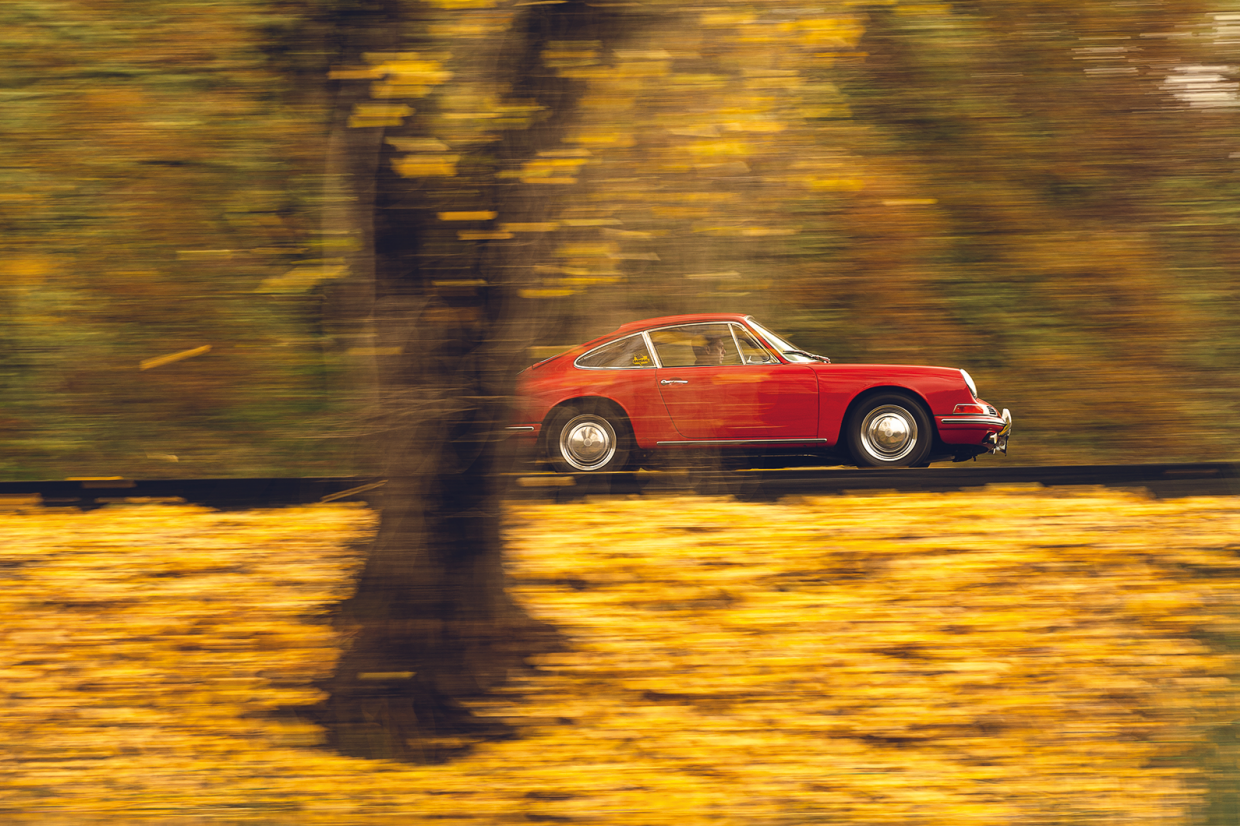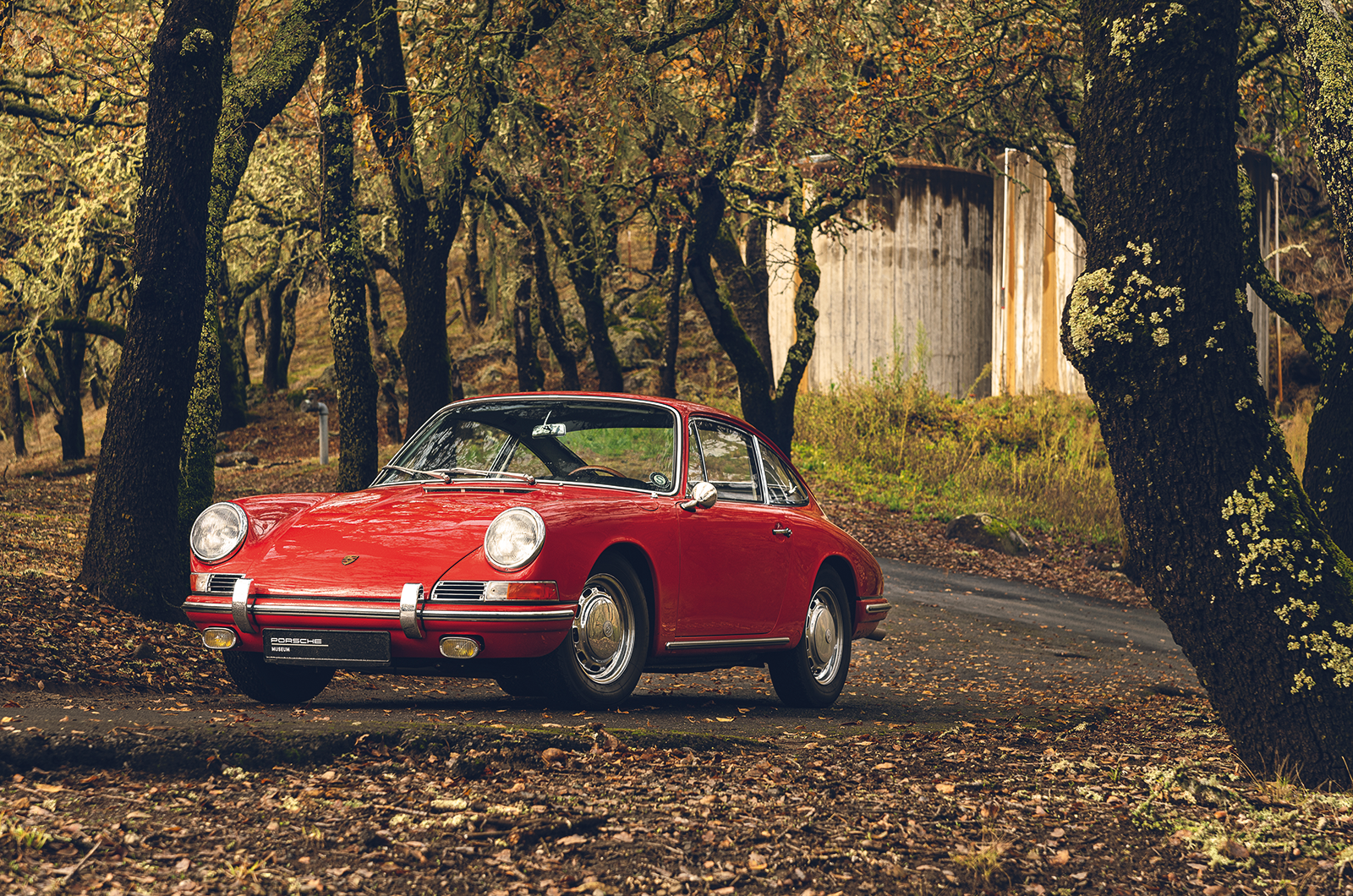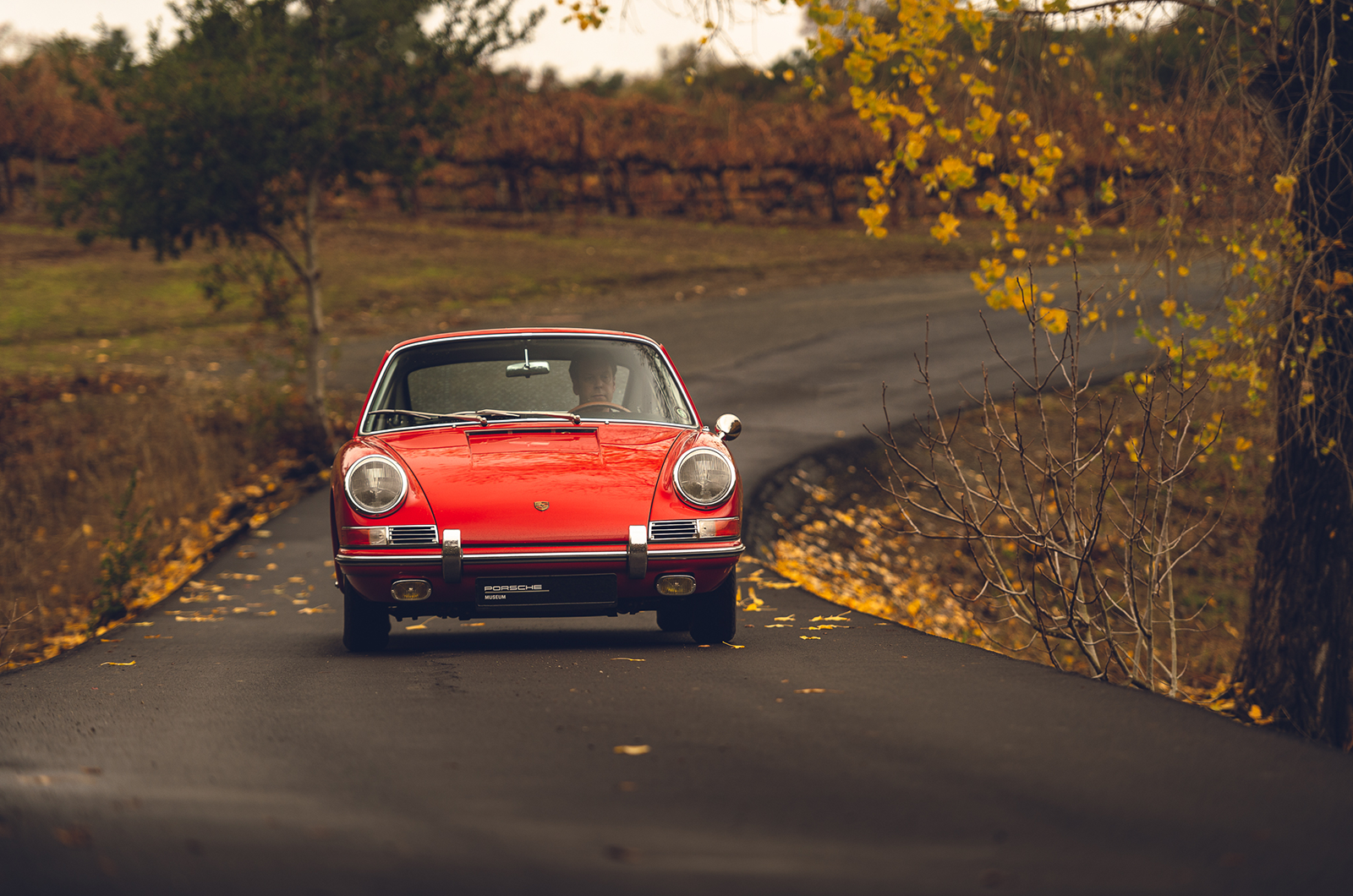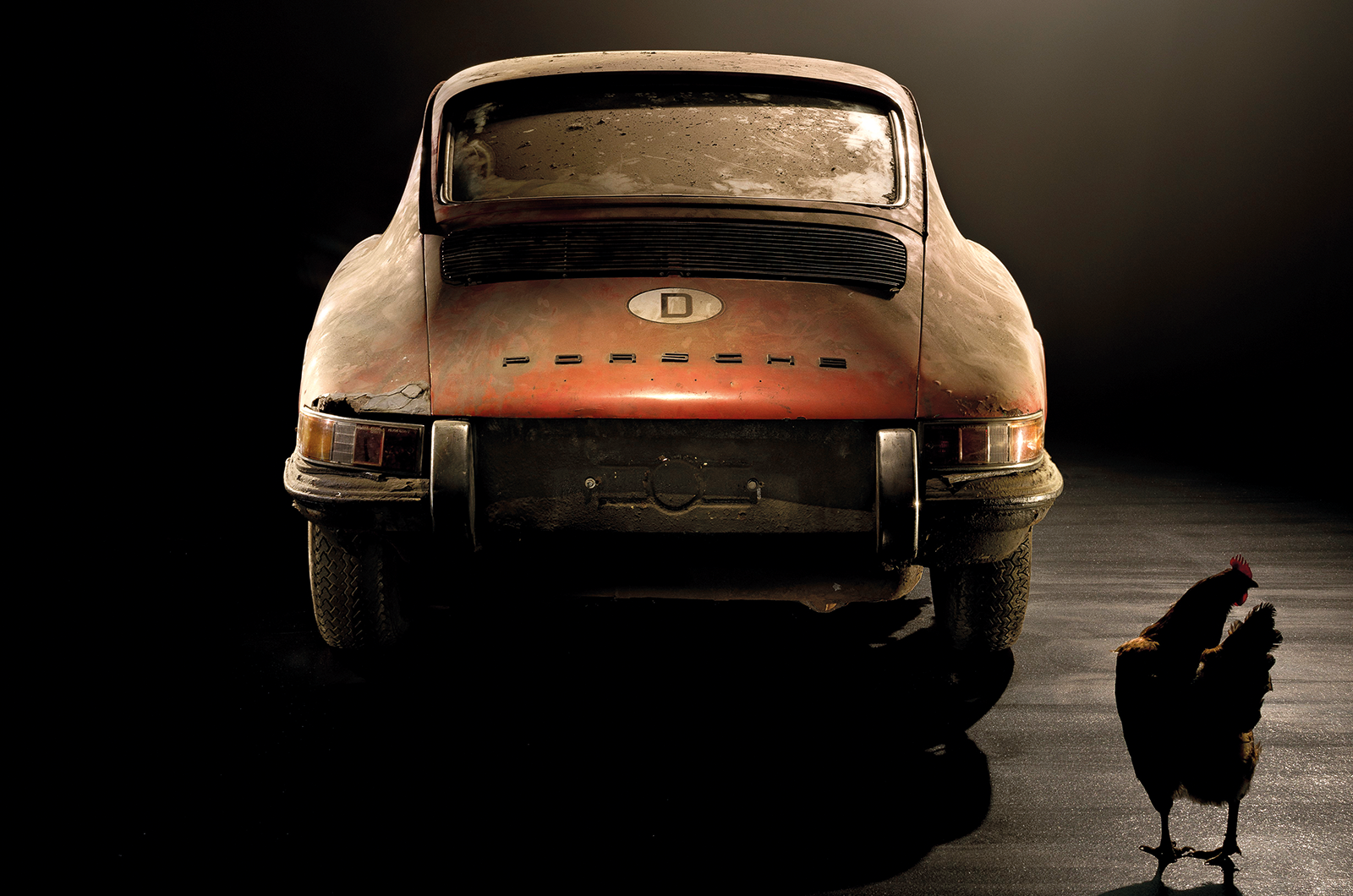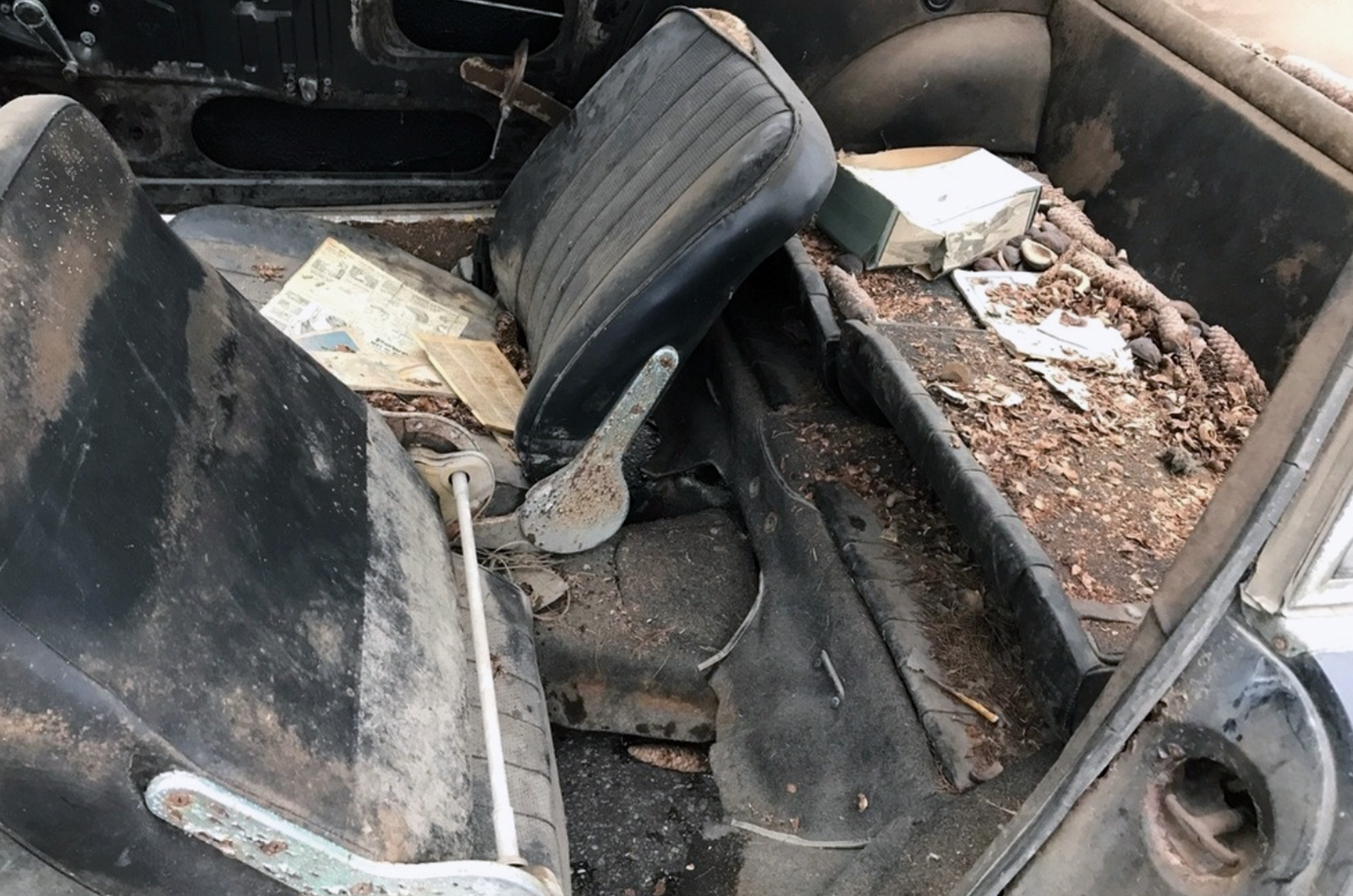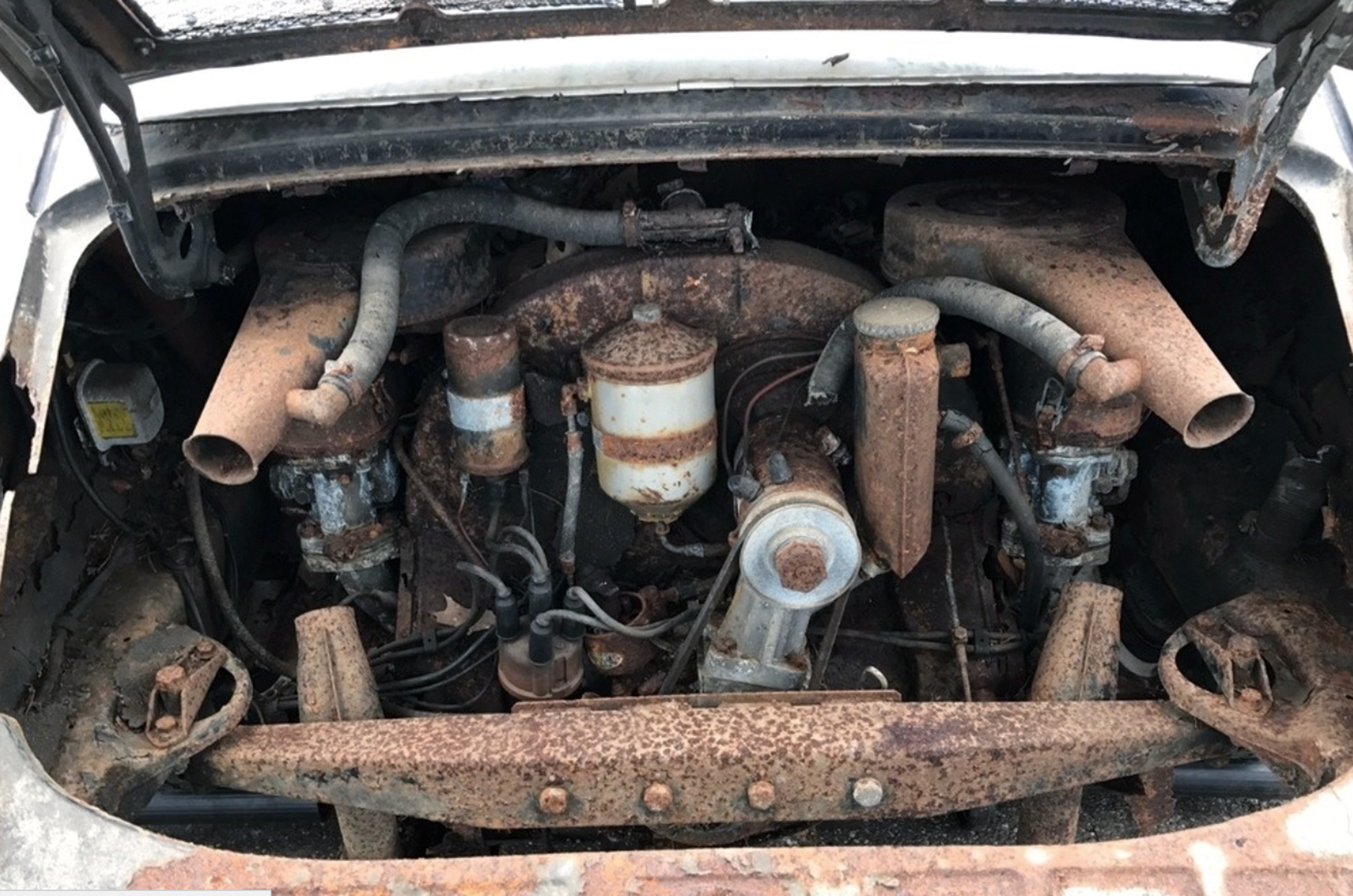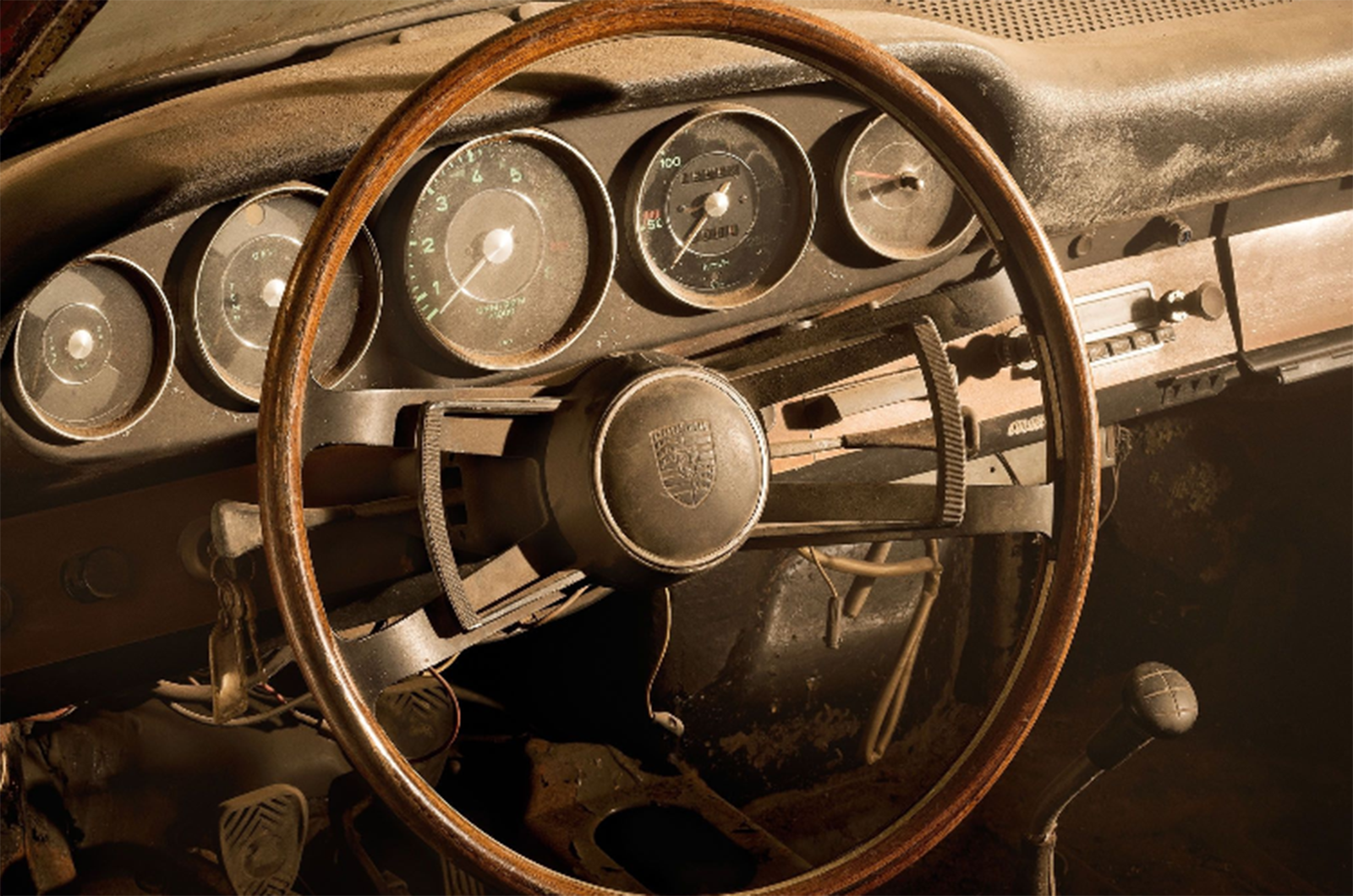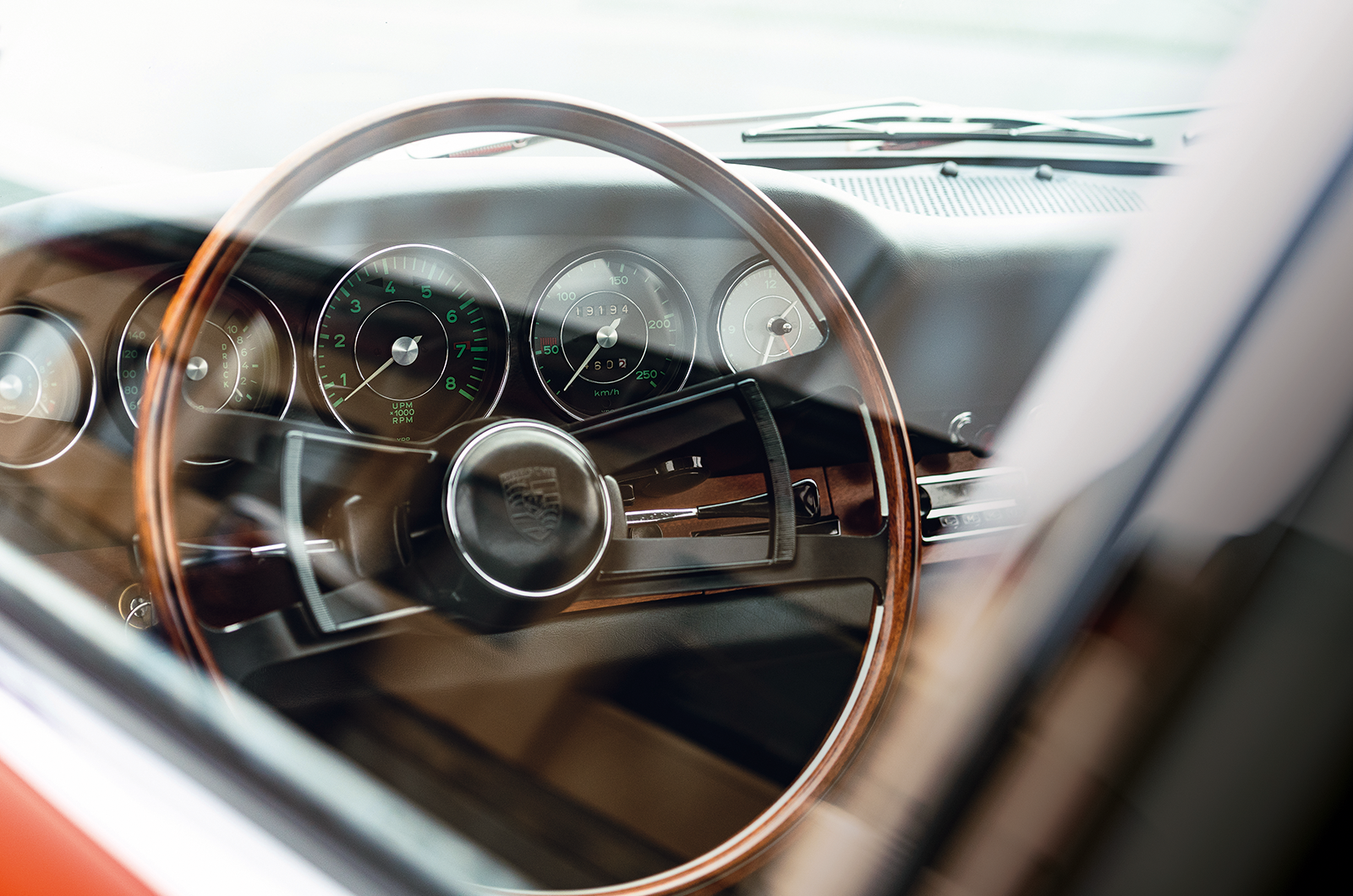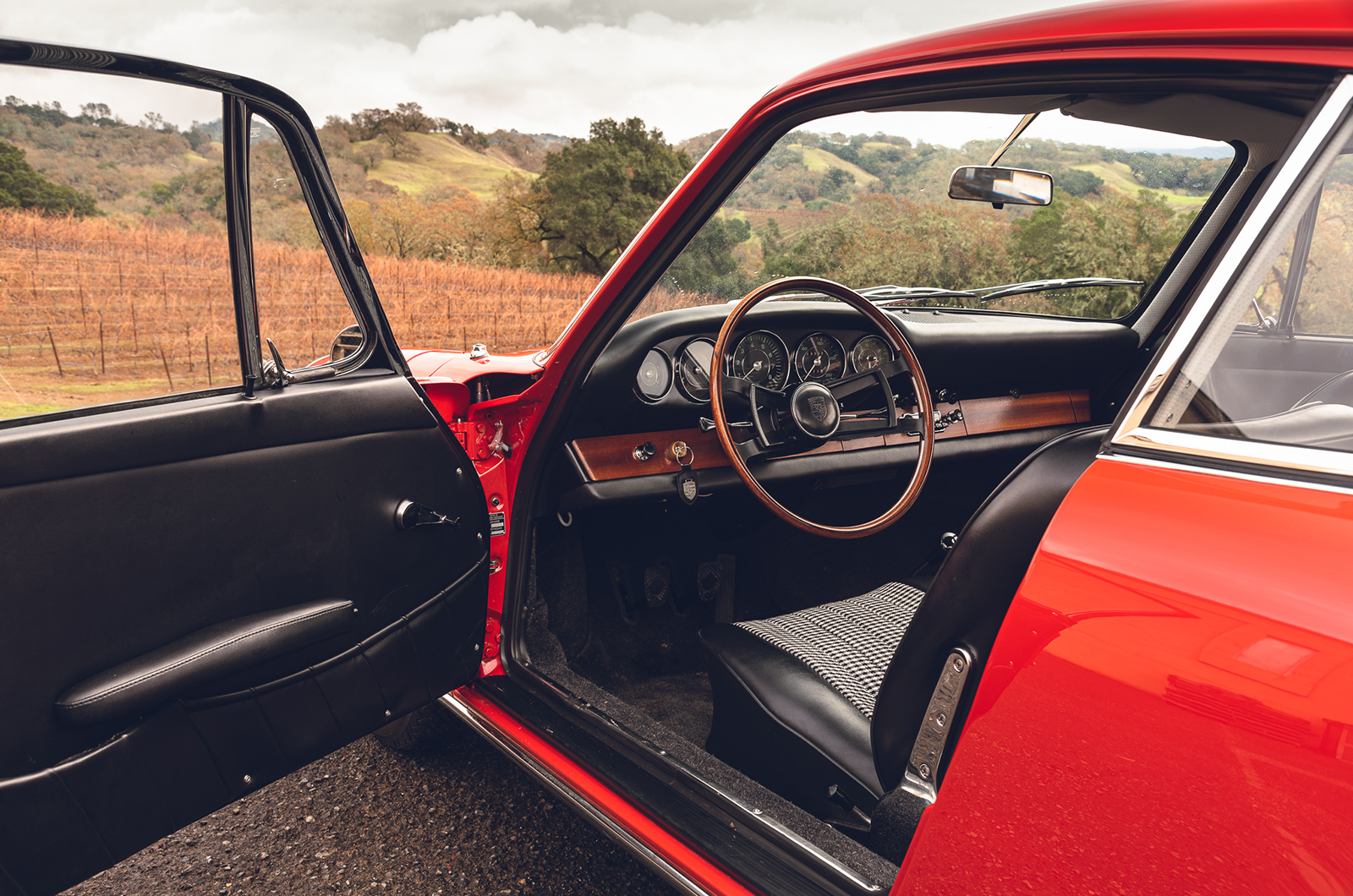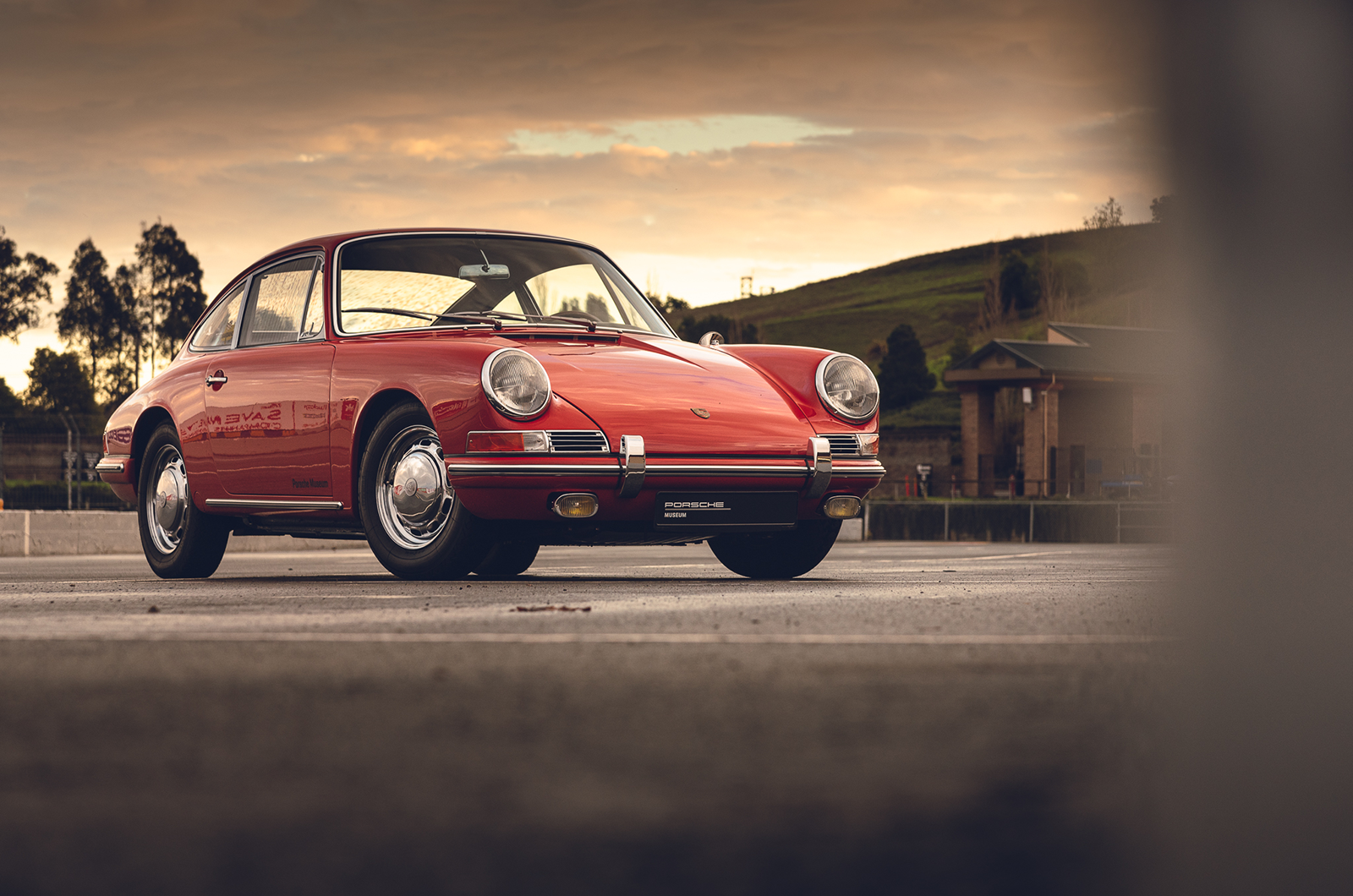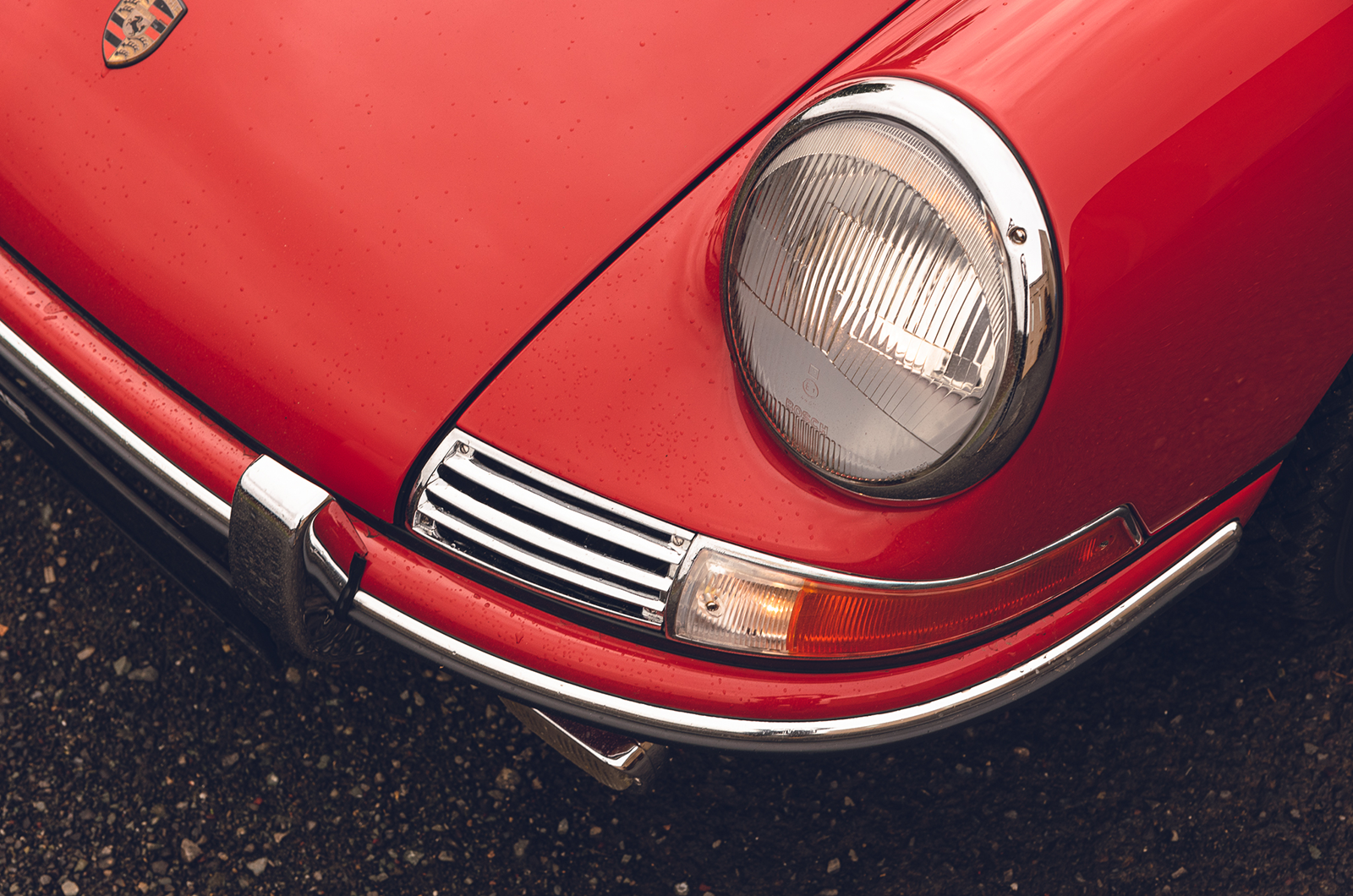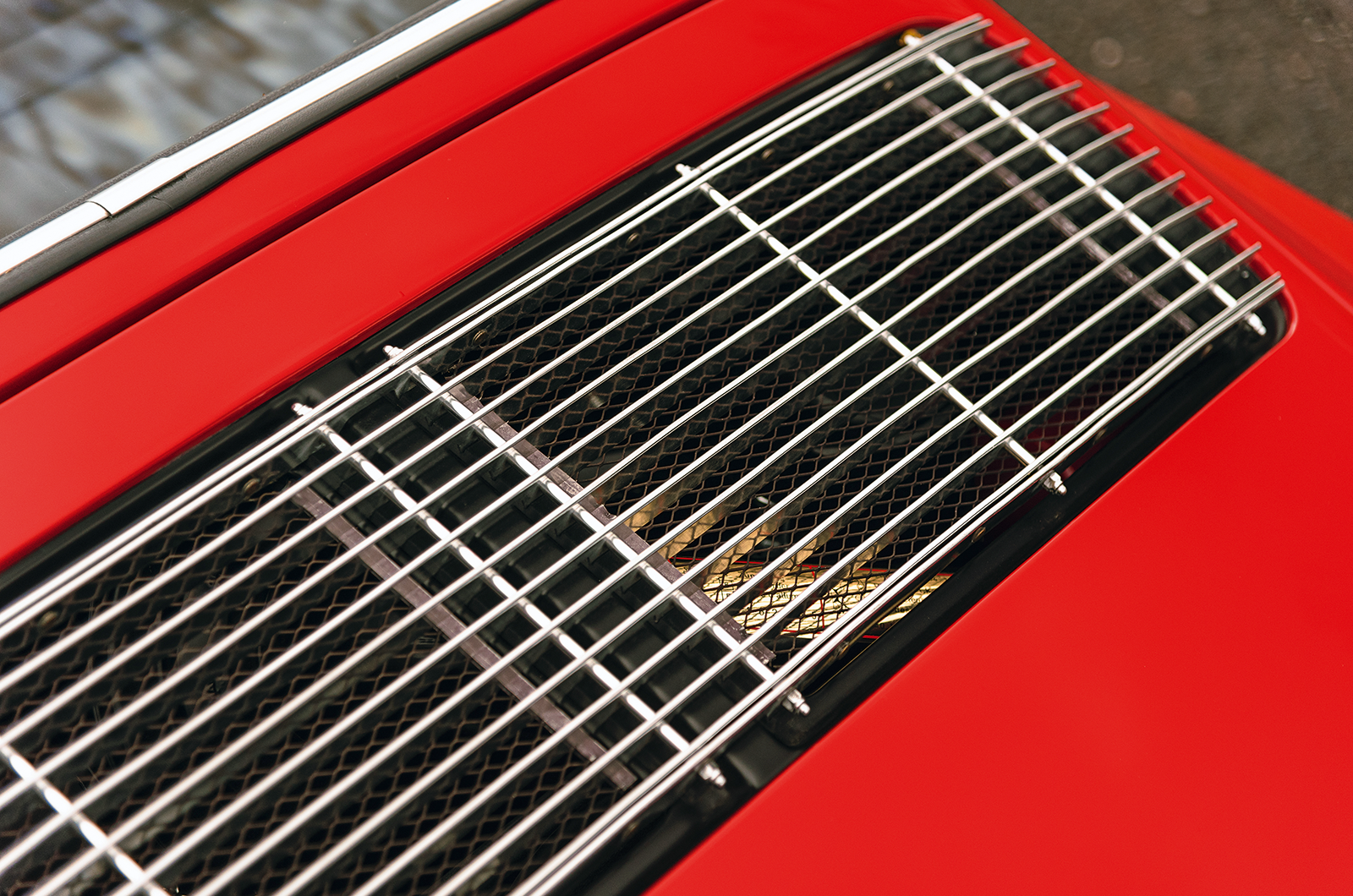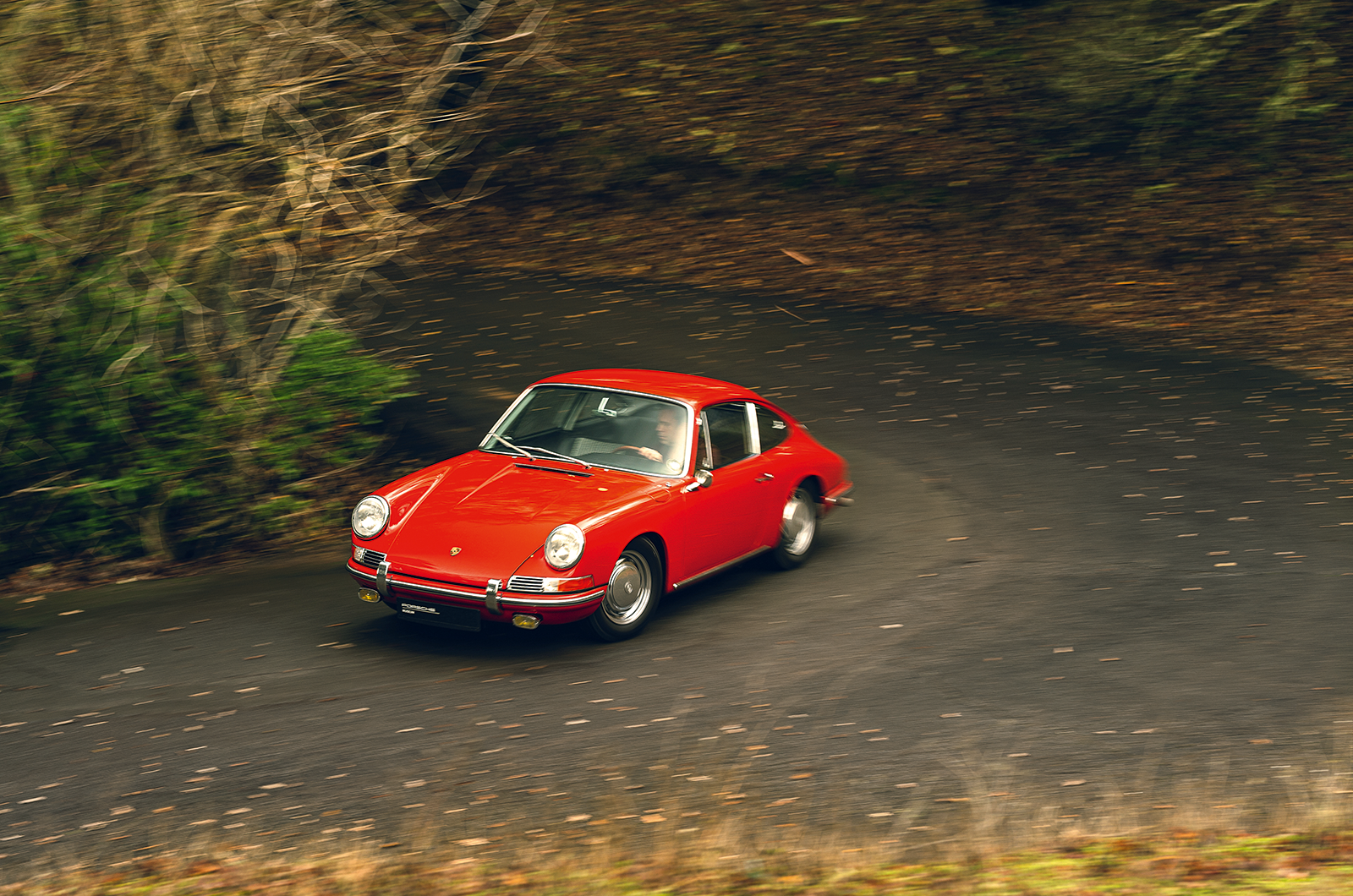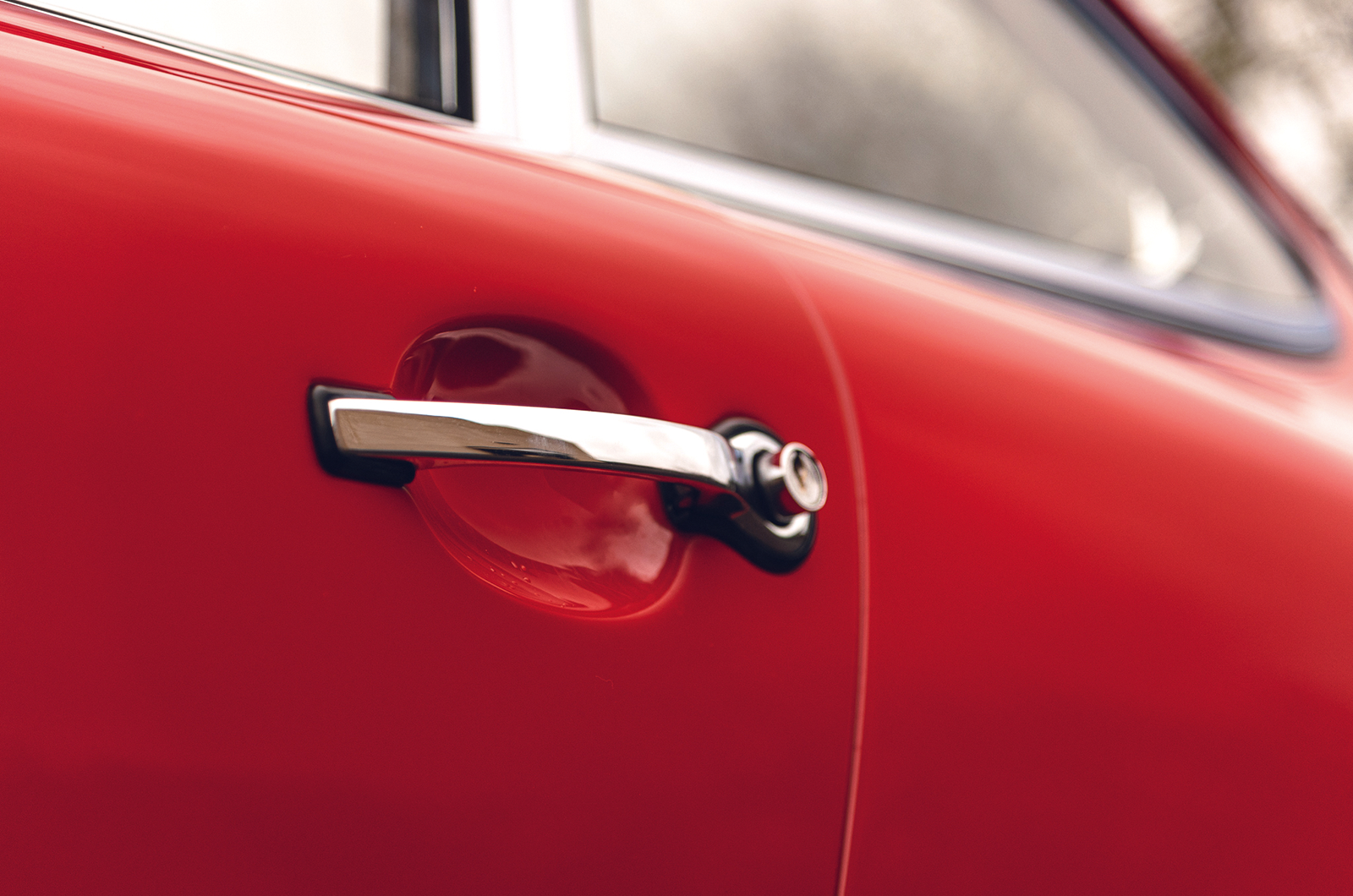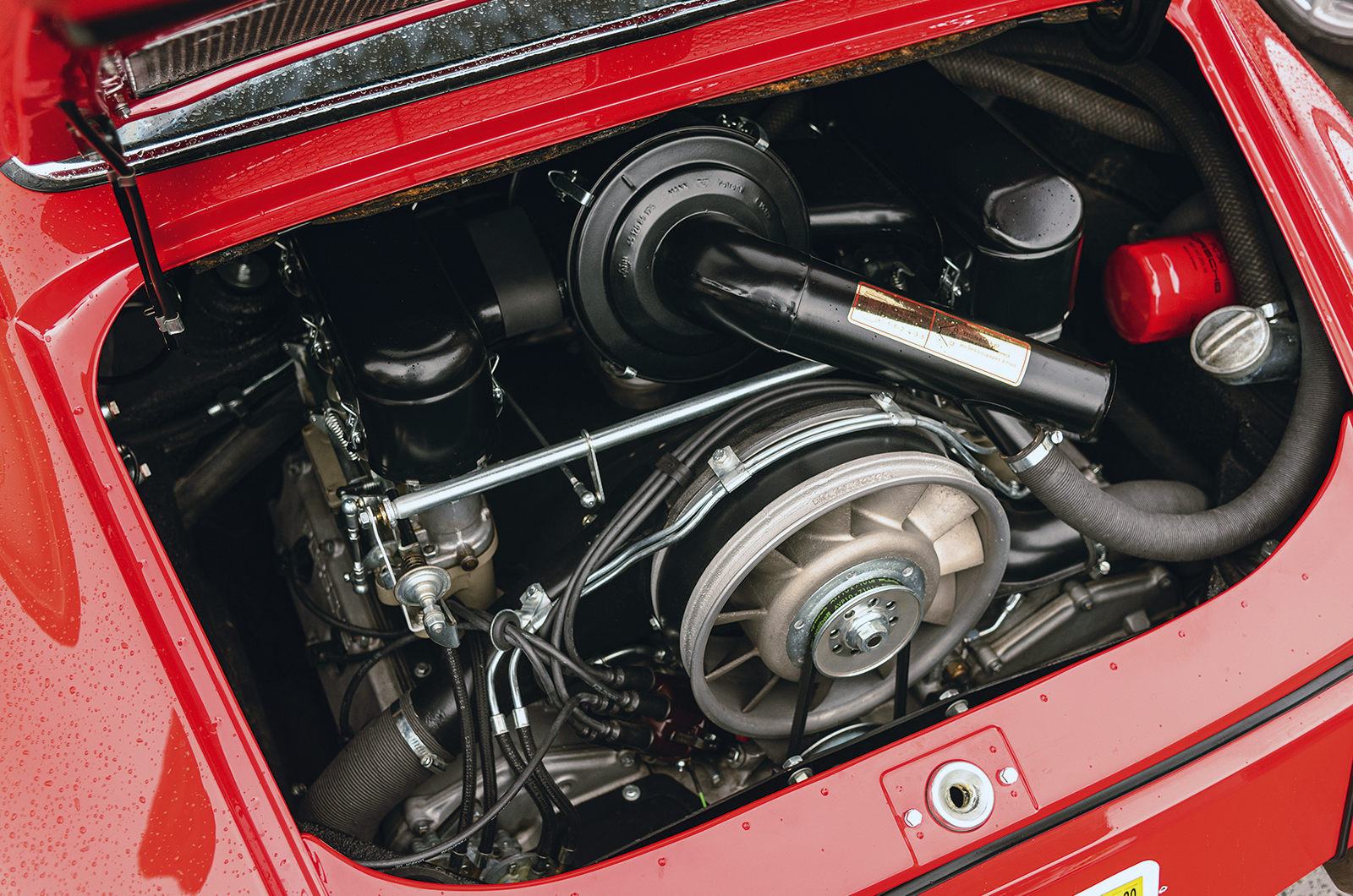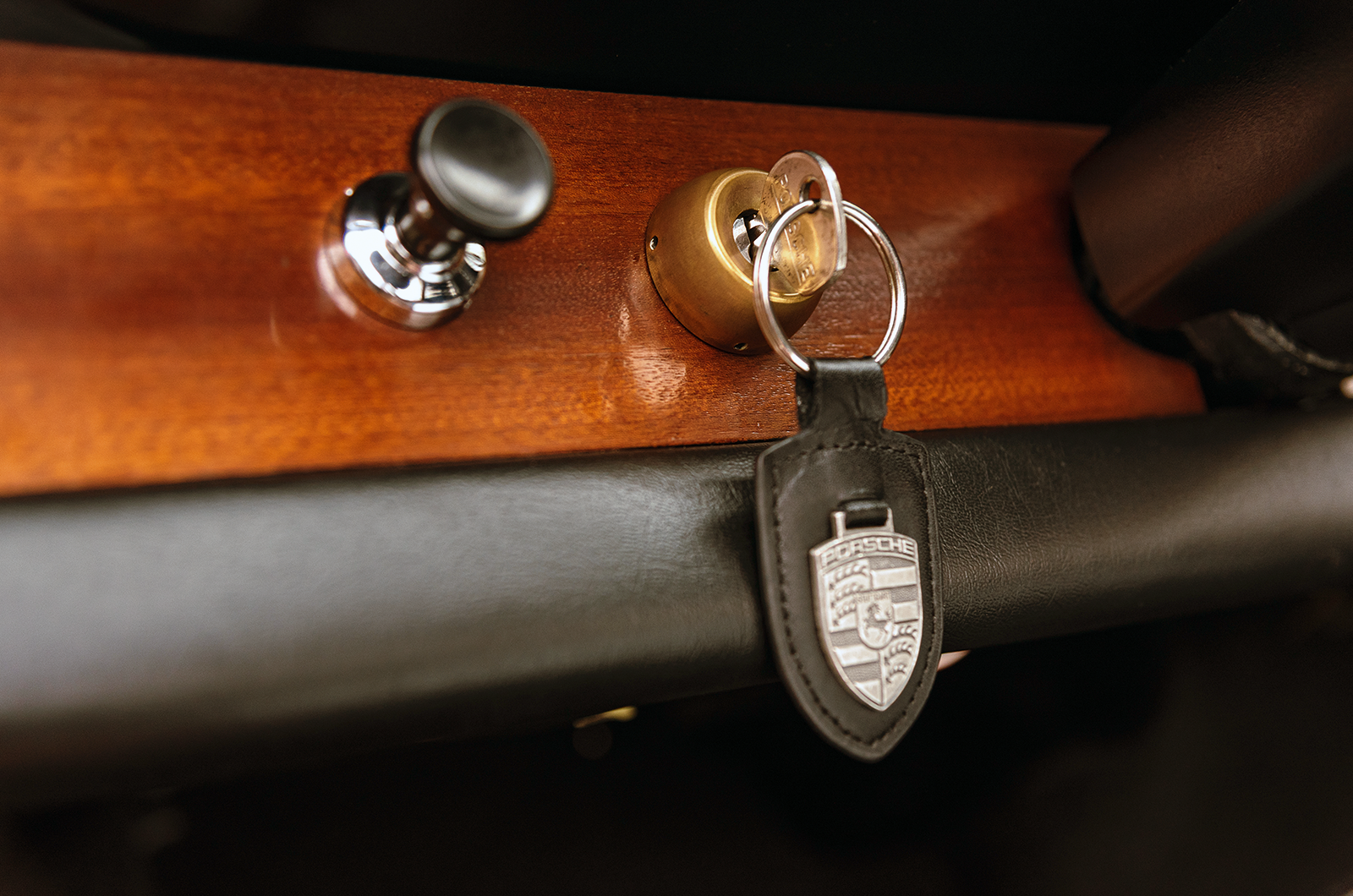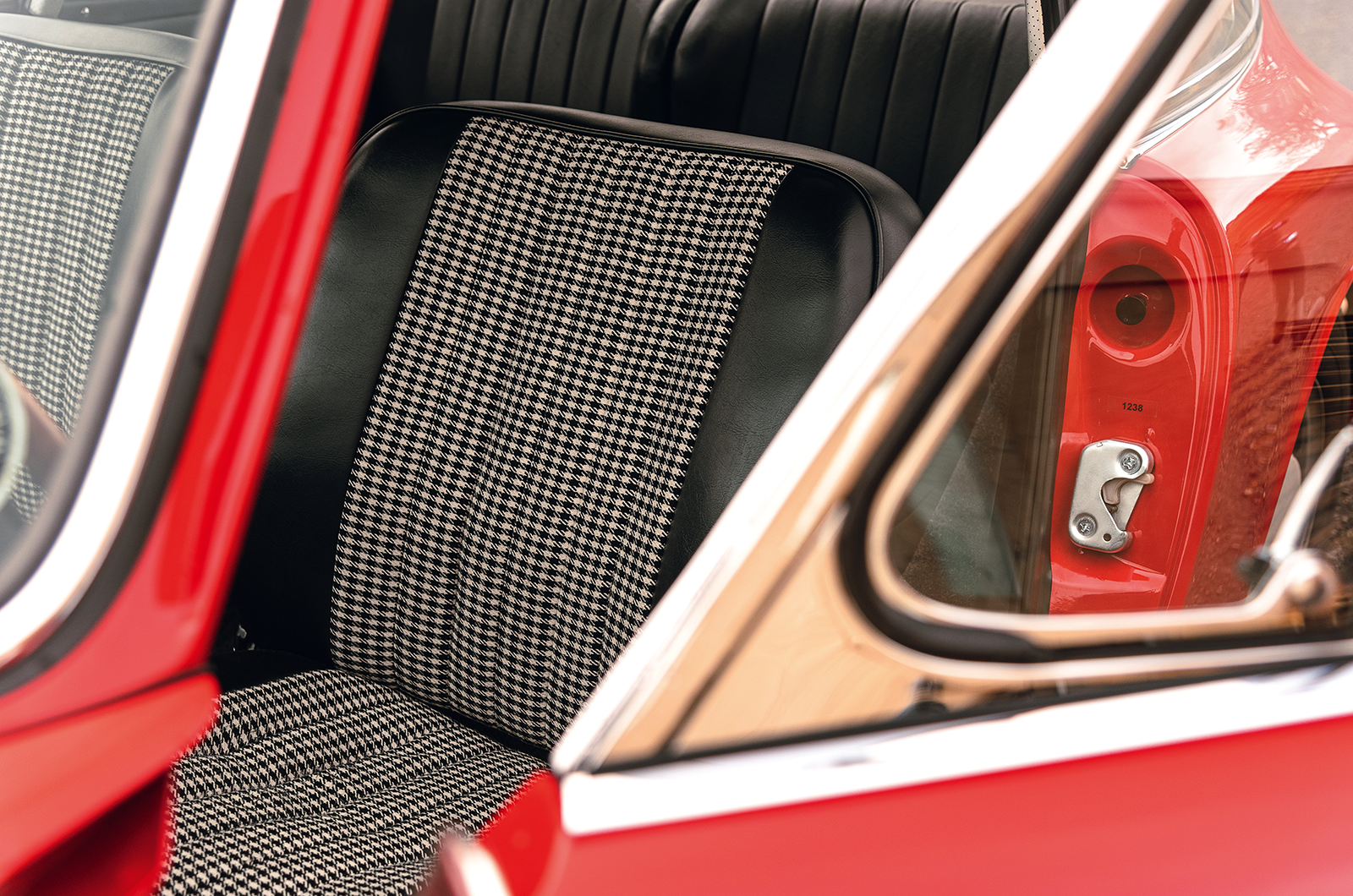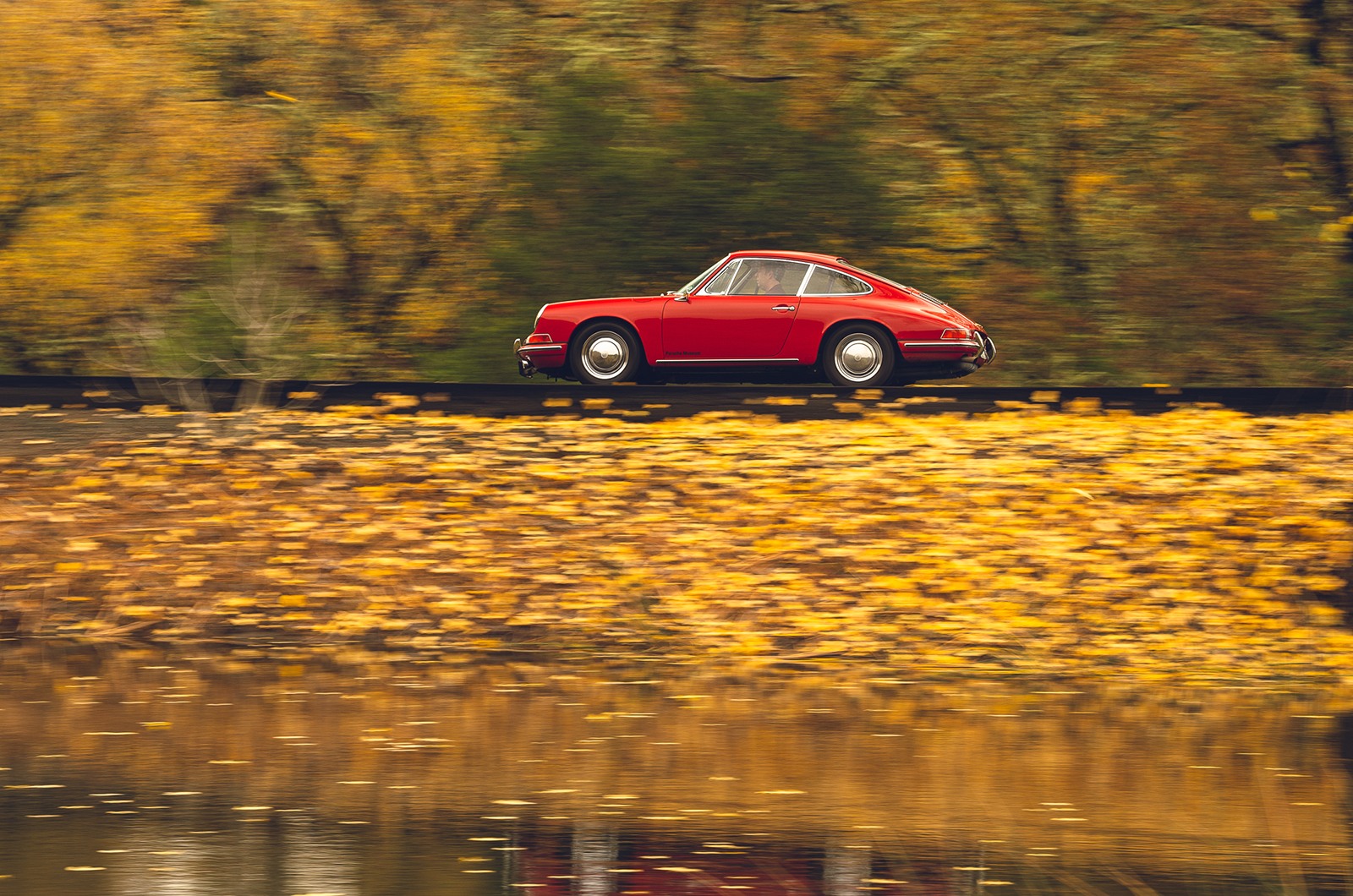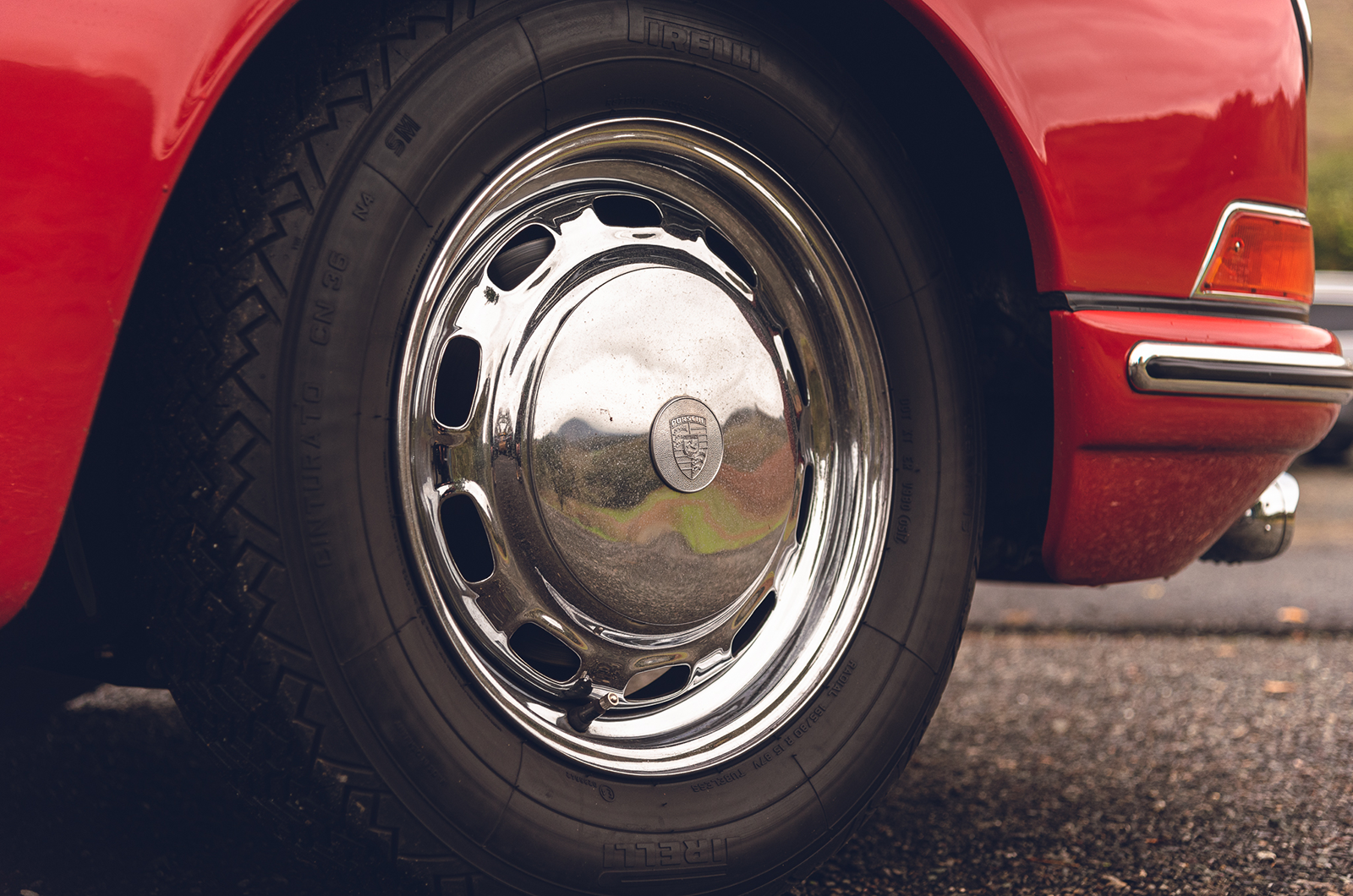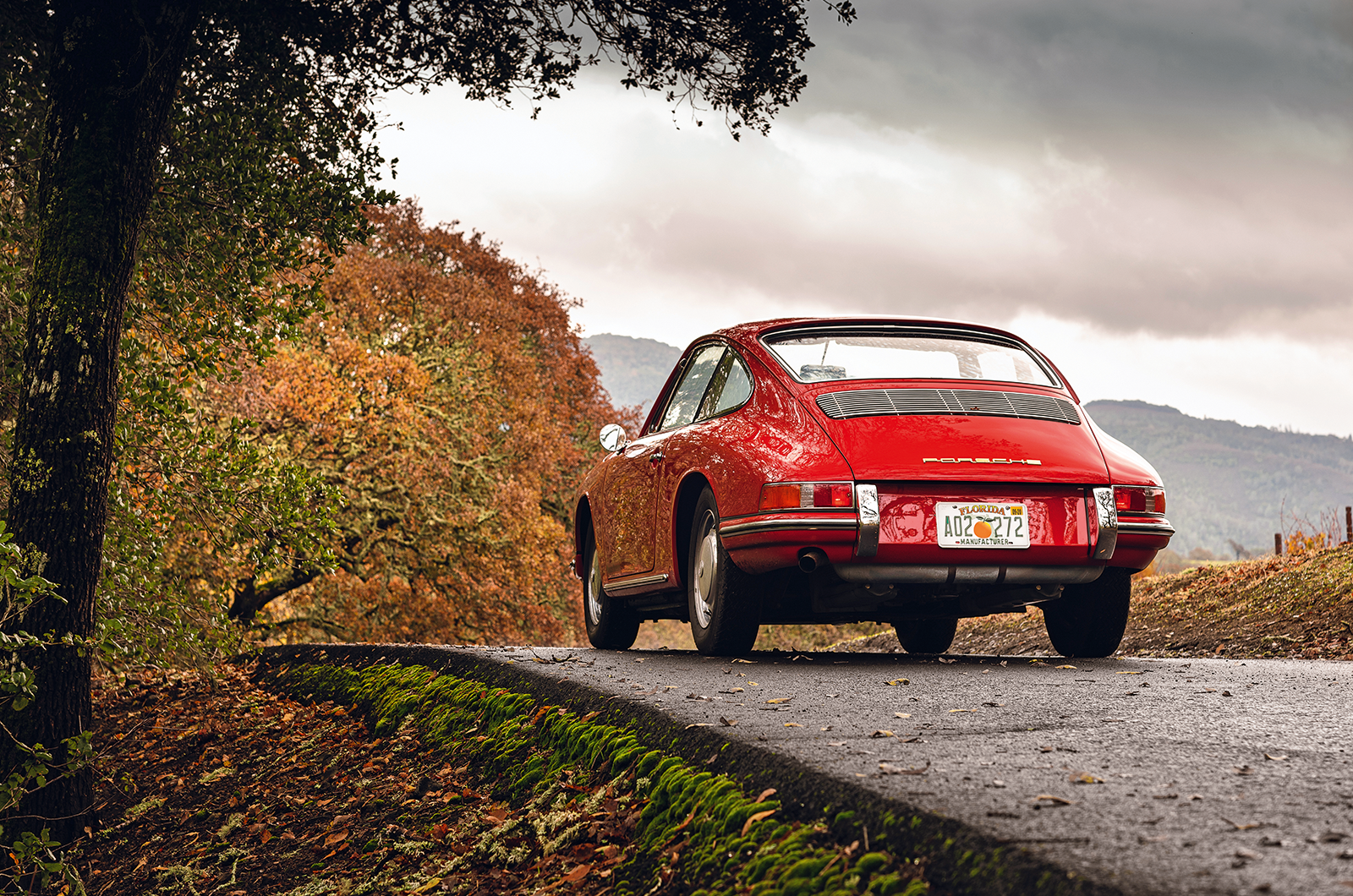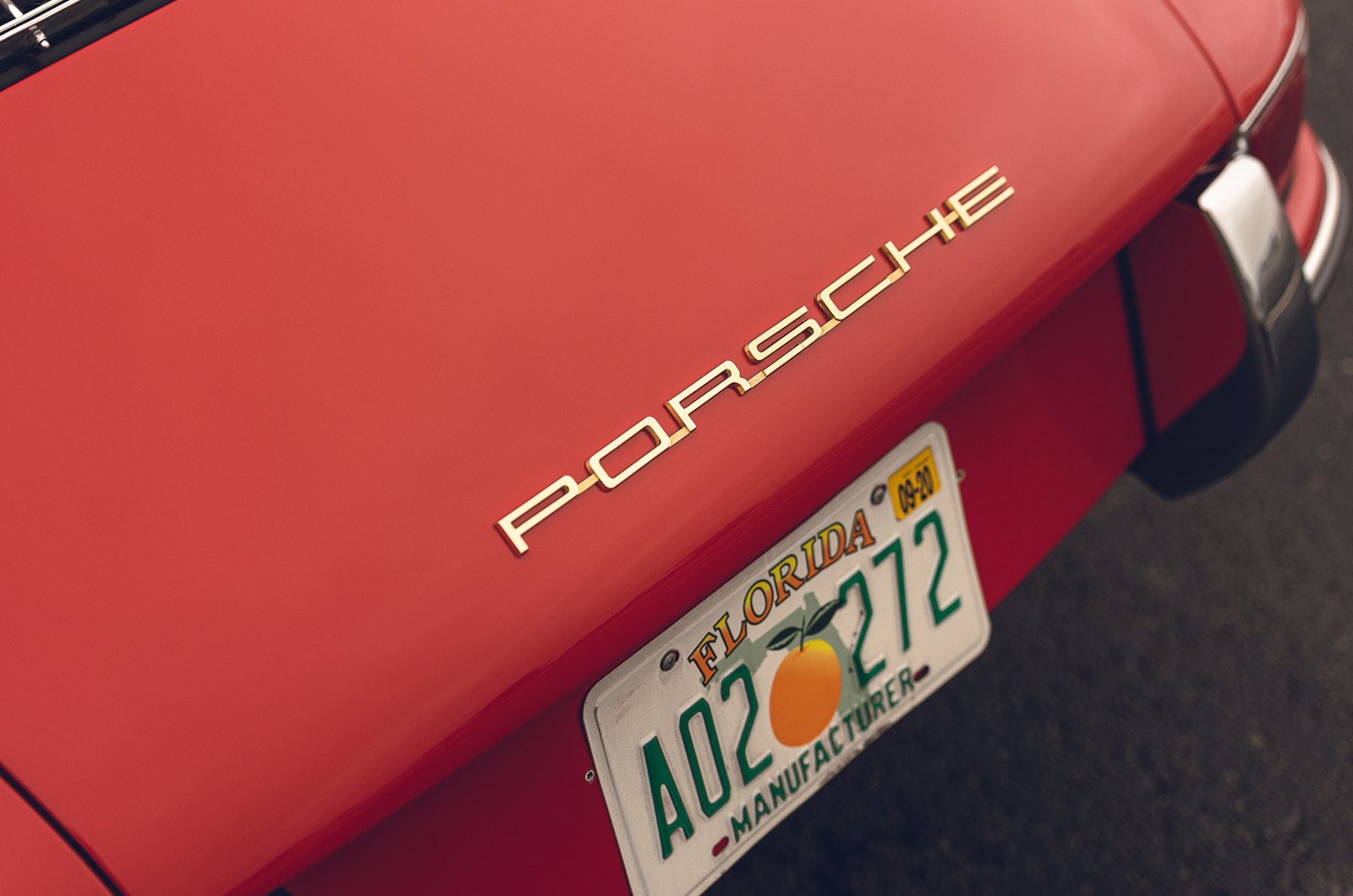Ease the dogleg ’box down and left for first, release the friendly clutch and we’re chuntering down a private road on a wine estate, getting familiar with the floor-hinged pedals with a softish brake and perky throttle, the light but feelsome steering and the delicate little snick of the gearlever.
It quickly does that 911 – sorry, 901 – trick of setting you at ease thanks to its compactness and feathery 1080kg kerbweight, as well as excellent vision both ahead and behind.
To this practicality is added an instinctively mechanical feel that brims with precision and response.
It feels approachable and usable as much as exciting, which is a big part of why a 911 remains the default sports car nearly 60 years on.
Almost unbelievably – given its significance, the time invested in its restoration and its undoubted value – we take a quick drive of Sonoma race track, which tumbles through the landscape with precious little run-off.
It is greasy and laced with standing-water booby-traps, having just been drenched by a rainstorm.
Given the conditions, the flat-six making a relatively modest 130bhp and the tall gearing (the 911 borrowed shorter ratios from the four-cylinder 912 from July 1965), the 901 is happiest in second gear climbing through Sonoma’s first few corners.
The steering bobs gently if chattily in hand as the nose glides effortlessly at each apex, and the rear tyres easily soak up the available performance.
Revs have to be kept up – it fluffs and sputters at low engine speeds.
Treading the tricky waters and the challenge of Sonoma’s undulations, it’s hard to fathom how the 911 earned a reputation for unpredicability simply because it feels so planted and safe.
Partly it’s the modern Pirelli 15in tyres made in the style of period originals, with a thin 165 width all round (911s didn’t get staggered tyres until later) and deeply absorbent sidewalls.
They’re not only impressively grippy, but gently progressive when they finally let go, too, thank goodness.
The front feels strikingly light but, as you lean on it, there is also such purity to the communication filtering through steering and tyres.
Taking it right to the edge of understeer seems completely natural, not the leap of faith it could be given that wet grass and walls lurk just beyond the track limits.
The sweetness of the turn-in is partly because there’s so little mechanical baggage over the front end, but these early models also had a wheelbase 57mm (2.24in) shorter than those from ’68.
It feels incredibly agile as a result, which is why classic racers rave about them and have to have the shorter wheelbase.
Same-size rubber all round no doubt helps reduce the natural understeer bias of a tail-heavy/nose-light sports car, too. This is a beautifully balanced car.
As confidence builds, the speed picks up and the dynamics are worked harder. The soft brake pedal is pressed with more conviction, settling the weight over the nose, turning in to the corner as the light, progressive steering tremors a little as tread blocks tremble on the edge of grip.
And yet just as it seems you’ve reached the limit, you can climb all over the throttle and power out of the corner with 184kg of engine squashing down the rear tyres, while the carb-fed flat-six rasps towards its 6200rpm power peak without so much as a hint of wheel scrabble.
It’s so absorbing that you forget this car is essentially irreplaceable, as both the very earliest 911 in Porsche’s collection and the last 901 built.
Former keeper Ibold was one of the first to see the finished car.
“We invited him to lift the sheet off in our workshop,” reveals Klein. “We were nervous and asked, ‘Do you remember this car?’ He remembered all the details and was close to tears. We’re still in touch today.”
It’s a long way from the old red 911 left in a barn, and yet the quirks of its early specification and marks of a colourful life mean that it could be no other than the final 901.
Images: Jordan Butters
Factfile
Porsche 901
- Sold/number built 1964/55
- Construction steel monocoque
- Engine alloy block and head, sohc 1991cc flat-six, two triple-choke Solex carburettors
- Max power 130bhp @ 6200rpm
- Max torque 128lb ft @ 4200rpm
- Transmission five-speed manual, RWD
- Suspension independent at front by MacPherson struts, longitudinal torsion bars rear semi-trailing arms, transverse torsion bars; telescopic dampers f/r
- Steering rack and pinion
- Brakes discs all round
- Length 13ft 7in (4163mm)
- Width 5ft 3in (1610mm)
- Height 4ft 3in (1320mm)
- Wheelbase 7ft 3in (2211mm)
- Weight 2380lb (1080kg)
- 0-60mph 8.5 secs
- Top speed 131mph
- Mpg 19.2mpg
- Price new £3750
- Price now £70-220,000 (first-gen 911)*
*Prices correct at date of original publication
READ MORE
14 forgotten barn-find Porsches
The Mercedes-Benz 300SL Gullwing smuggled out of Cuba
Behind the scenes of the last days at Bristol Cars
Ben Barry
Ben Barry is a contributor to Classic & Sports Car
